On 28 January 2025, senior finance professionals gathered for the 17th Zurich FP&A Board meeting to explore the evolving role of FP&A Business Partnering in a rapidly changing, AI-driven business environment. The session was facilitated by Larysa Melnychuk, CEO and Founder of the FP&A Trends Group, and held at the Michael Page & Page Executive offices in central Zurich.
Figure 1. Zurich FP&A Board №17, January 2025
This thought-provoking meeting brought together leaders from organisations including Hitachi Energy, Lonza, Takeda Pharmaceuticals, Barry Callebaut, Novo Nordisk Health Care AG, Zurich Insurance Company Ltd, Swisscom, Volvo Group (Schweiz) AG, The Adecco Group, Sulzer, and others.
The event was sponsored by Pigment, in partnership with Michael Page.
What Is FP&A Business Partnering Today?
The session began by exploring what Business Partnering really means in the context of modern FP&A.
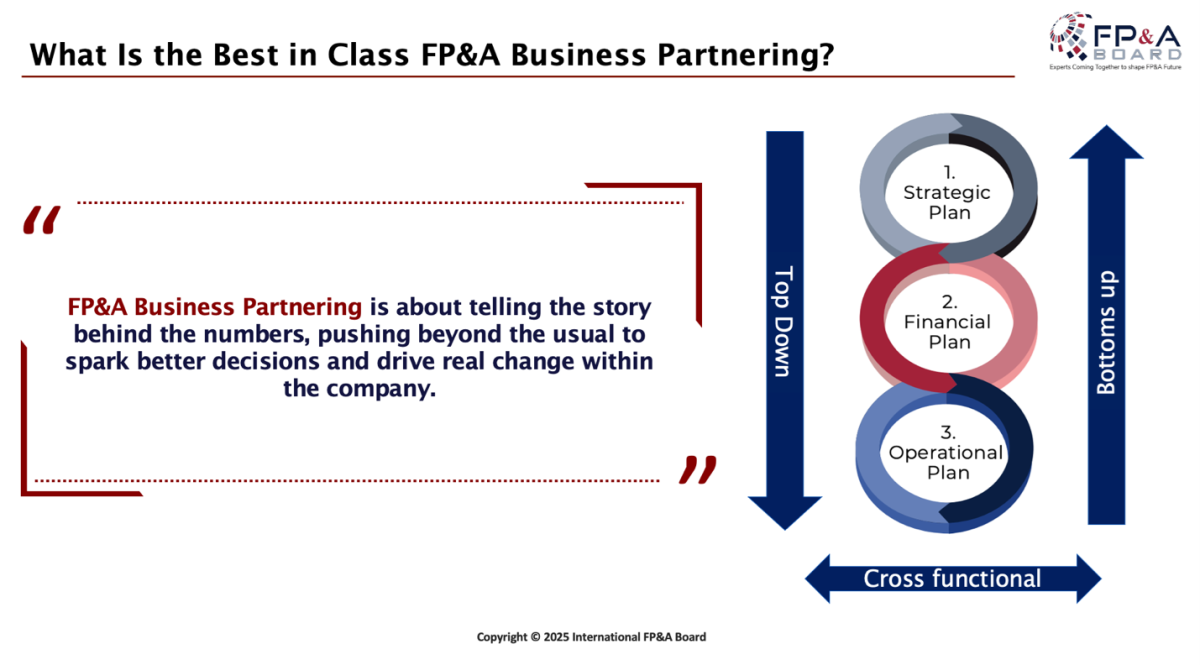
Figure 2
Larysa Melnychuk shared data from the 2024 FP&A Trends Global Survey, revealing a striking rise in focus on partnering: from 16% in 2021 to 50% in 2024 — a threefold increase in just three years.
Yet despite growing attention, most organisations still face considerable barriers to embedding FP&A as a true business partner. In a collaborative exercise, participants shared real-life obstacles they face:
- Technology
- Poor data quality
- Weak sponsorship and lack of leadership support
- Mindset & culture
- Integration.
This candid exchange confirmed what many intuitively feel: becoming a true business partner is not just about skills or tools — it’s about mindset, support, and visibility.
The Attributes of Best-in-Class FP&A Business Partners
One of the session’s most resonant moments came when participants reviewed the FP&A Board model, defining the attributes of top-performing FP&A business partners.
According to the framework, effective FP&A partnering emerges from a blend of soft and technical skills and is powered by four core behavioural attributes.
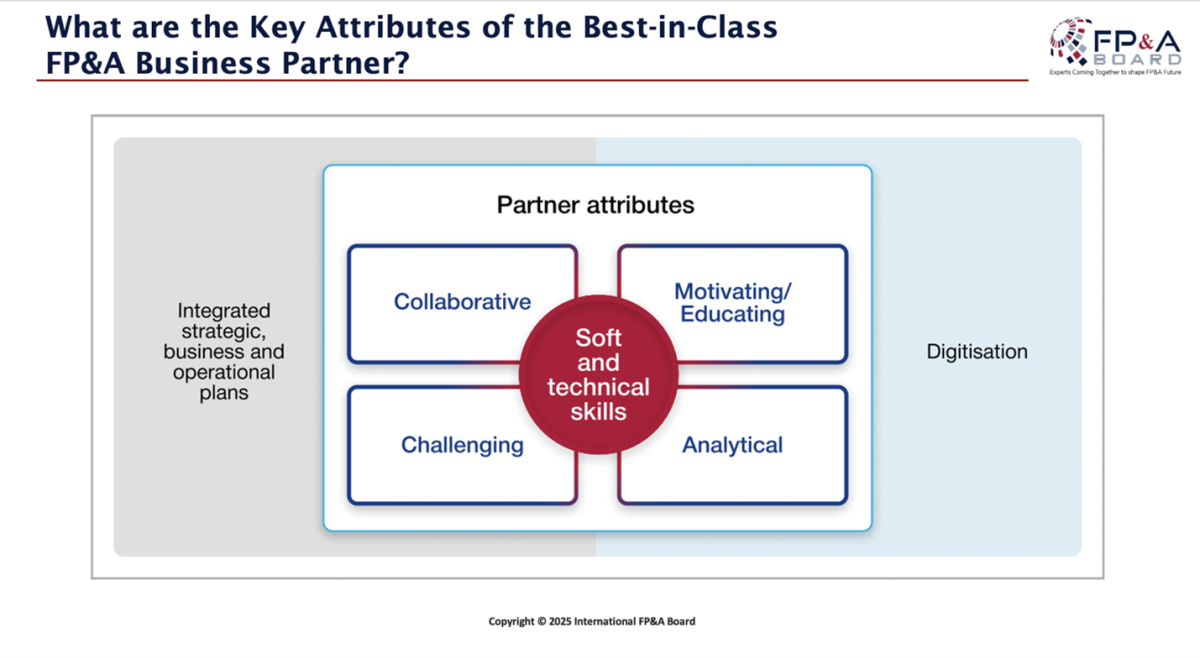
Figure 3
Effective FP&A Business Partnering can be delivered through the combined effort of specialists within an FP&A team responsible for specific tasks or activities. They are FP&A Analyst, FP&A Architect, FP&A Storyteller, FP&A Data Scientist, and FP&A Influencer.
Which Branch of AI Holds the Greatest Potential?
The next part of the session explored how FP&A teams are leveraging Artificial Intelligence today. A live poll revealed the following:
- 61% of participants do not yet use AI in their FP&A function
- 18% use it to automate routine tasks (e.g., report generation, data loading)
- 9% use AI to analyse data patterns
- 9% use it to generate insights and summaries
- Just 3% use it to produce forecasts
These numbers confirmed a shared observation: while AI is widely discussed, it is not as widely embedded. For most, adoption is still at the experimentation stage.
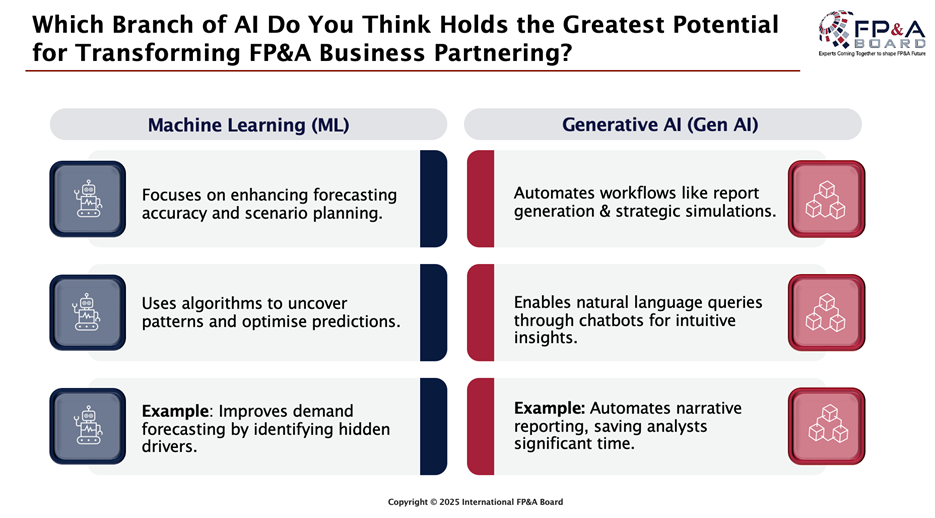
Figure 4
Case Study: Next generation of FP&A Business Partnering in the age of AI automation
A highlight of the event was the case study presented by Tijmen van den Bovenkamp, Commercial and Operational Finance Director at PRÆSIDIAD and Zurich FP&A Board member.
Figure 5. Zurich FP&A Board №17, January 2025
He illustrated how PRÆSIDIAD is building a next-generation FP&A partnering model.
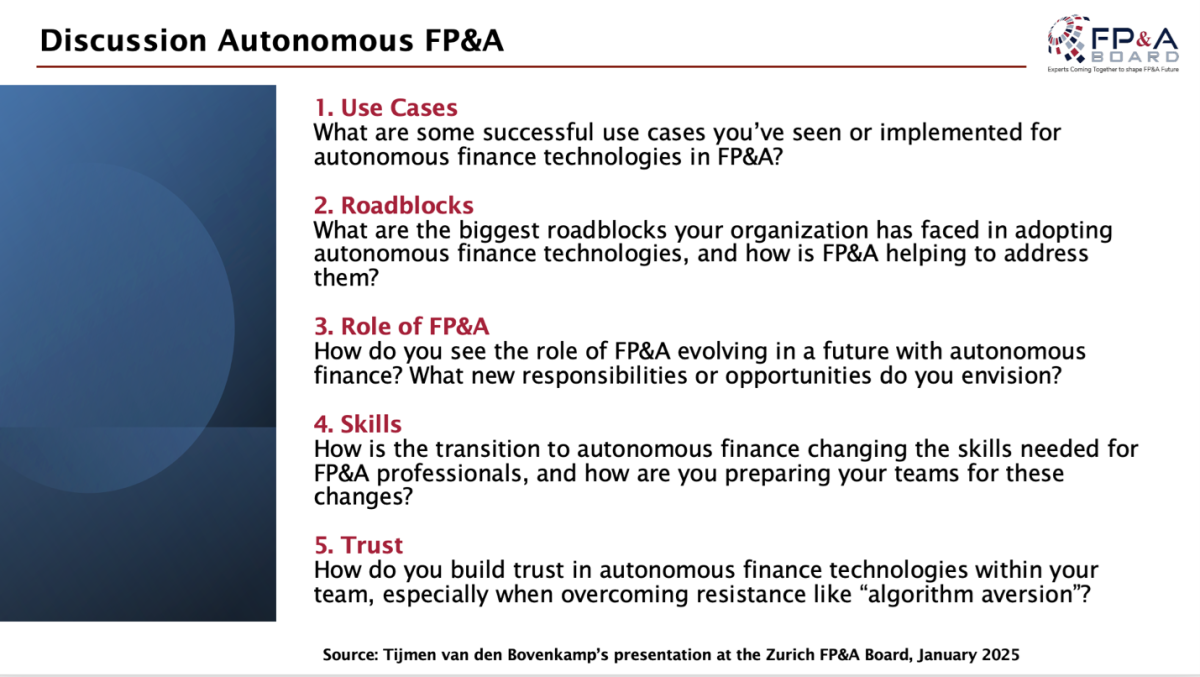
Figure 6
His case demonstrated how technology, mindset, and organisational design must work together to enable transformation.
Larysa also shared the FP&A Business Partnering Maturity Model, developed by FP&A Trends Group. This tool can help you tailor your path to the leading state of FP&A Business Partnering Maturity and become a better partner to your colleagues.
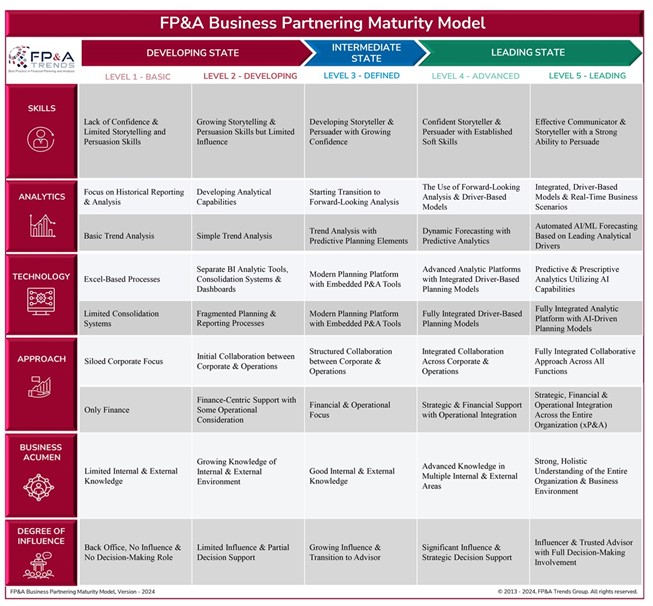
Figure 7
Group Discussions: Key Enablers and Takeaways
The participants split into three groups to tackle critical implementation challenges through focused discussion.
Group 1
How can organisations implement a best-in-class FP&A business partnering model to move from transactional to strategic?
Key recommendations:
- Prioritise data quality and readiness
- Start small with pilots or proof-of-concepts
- Ensure strong leadership communication and alignment
- Build a culture of continuous improvement
- Embrace change management, with clear goals and ownership
Figure 8. Zurich FP&A Board №17, January 2025
Group 2
How can FP&A teams develop the skills and capabilities needed for effective business partnering?
Insights included:
- Deep understanding of the business and operations
- Enabling informed decision-making, not just reporting
- Early involvement in planning processes
- Strong communication tailored to the audience
- Building trust and confidence within the organisation
- Promoting an open environment for growth and development
- Supporting both hard (data) and soft (storytelling, influence) skills
Group 3
How can FP&A use AI, automation, and technology to focus less on data gathering and more on insights?
The group shared practical enablers:
- Focus on data ownership and structure
- Define clear use cases linked to value
- Begin with simple automation and scale iteratively
- Align AI projects with business priorities, not internal process only
- Use technology to free time for scenario planning, insight generation, and challenge







